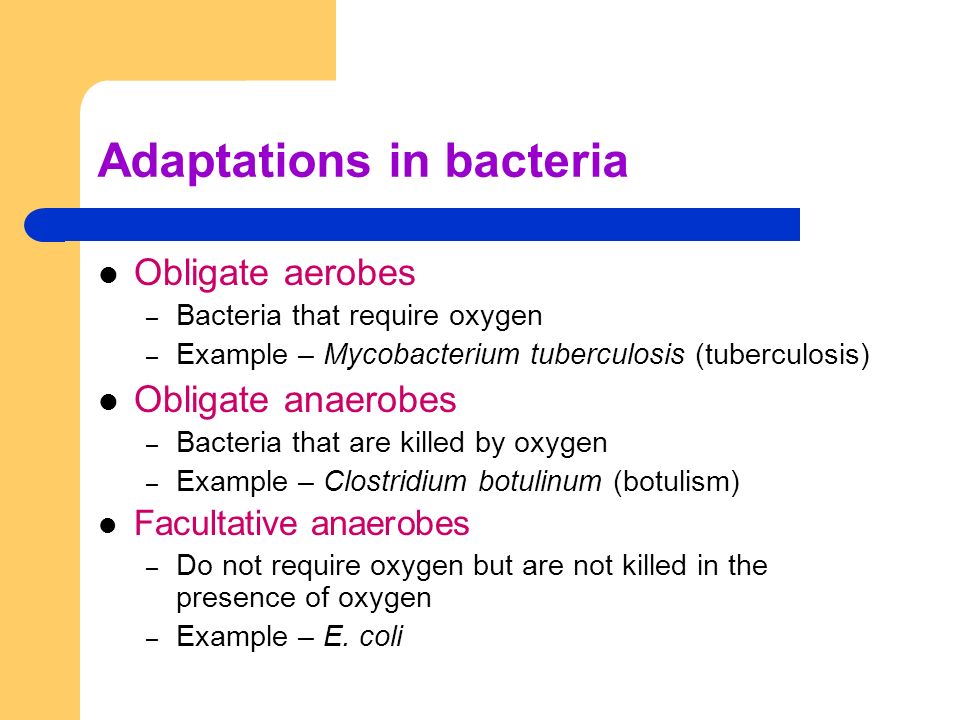
A common facultative anaerobe is yeast used in various cooking applications such as making bread or beer. It is a common bacterium and is found in the intestinal tract of human beings birds and other mammals.

Facultative anaerobes are organisms that thrive in the presence of oxygen but also grow in its absence by relying on fermentation or anaerobic respiration if there is a suitable electron acceptor other than oxygen and the organism is able to perform anaerobic respiration.
Example of facultative anaerobe. A common facultative anaerobe is yeast used in various cooking applications such as making bread or beer. In either case this facultative anaerobe must function without oxygen. Yet the yeast can still survive and must for these products to come out right.
In bread yeast is responsible for making the bubbles in the dough. A facultative anaerobe is an organism that makes atp by aerobic respiration if oxygen is present but is capable of switching to fermentation if oxygen is absent. Some examples of facultatively anaerobic bacteria are staphylococcus spp escherichia coli salmonella listeria spp shewanella oneidensis and yersinia pestis.
Bacteria species including salmonella species shigella and escherichia coli e. Coli are the most familiar examples of facultative anaerobes. All of these bacteria are associated with infection.
Facultative anaerobes can change their metabolic processes depending on the presence of oxygen using the more efficient process of respiration in the presence of oxygen and the less efficient process of fermentation in the absence of oxygen. Examples of facultative anaerobes include e. Facultative anaerobes can live with or without oxygen and because of that they can be found in many places and not all are bacteria.
An example of a facultative anaerobe is e. Coli which is found in the large intestine of vertebrates such as humans. Anthracisis a non motile facultative anaerobe and produces an exotoxin.
Anthrax can result in central nervous system. Among the facultative anaerobes there are many bacteria but also many eukaryotes for example the fungus saccharomyces cerevisiae. Many species of aquatic invertebrates are also considered facultative anaerobes for example many types of polychaetes or marine worms.
Facultative anaerobes are organisms that thrive in the presence of oxygen but also grow in its absence by relying on fermentation or anaerobic respiration if there is a suitable electron acceptor other than oxygen and the organism is able to perform anaerobic respiration. As such they are different from other types of organisms aerobes that need oxygen for their energy needs. Compared to aerobes that need oxygen to grow anaerobes are capable of using various other substances during metabolism.
Examples of anaerobic organisms include. One infamous example of an obligate anaerobe is clostridium botulinum. This common bacterium produces a potent neurotoxin that can be fatal in even small amounts.
It is found growing in items such as home canned products baked potatoes wrapped in aluminum foil and honey. Another type of bacillus is e. Coli is a facultative anaerobe which can survive without oxygen that is named after its discoverer theodor escherich.
It is a common bacterium and is found in the intestinal tract of human beings birds and other mammals. Coli can cause acute respiratory problems diarrhea and urinary tract infections.